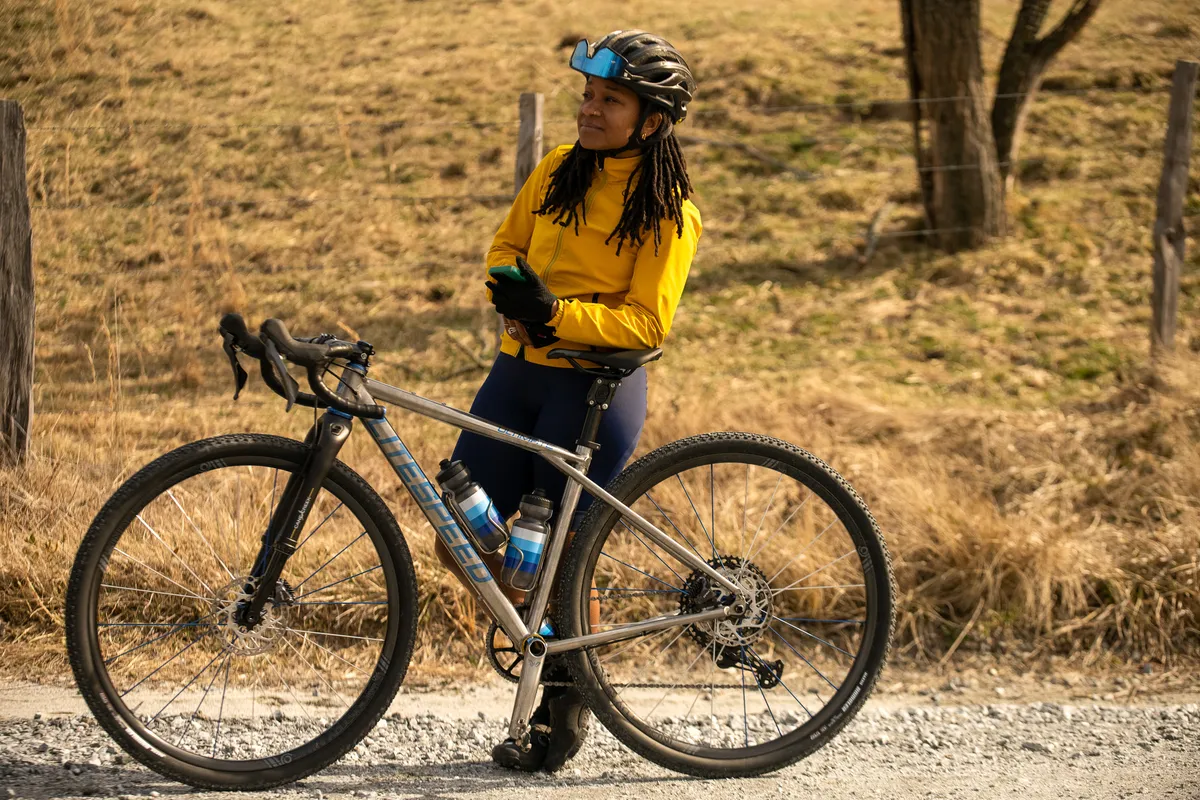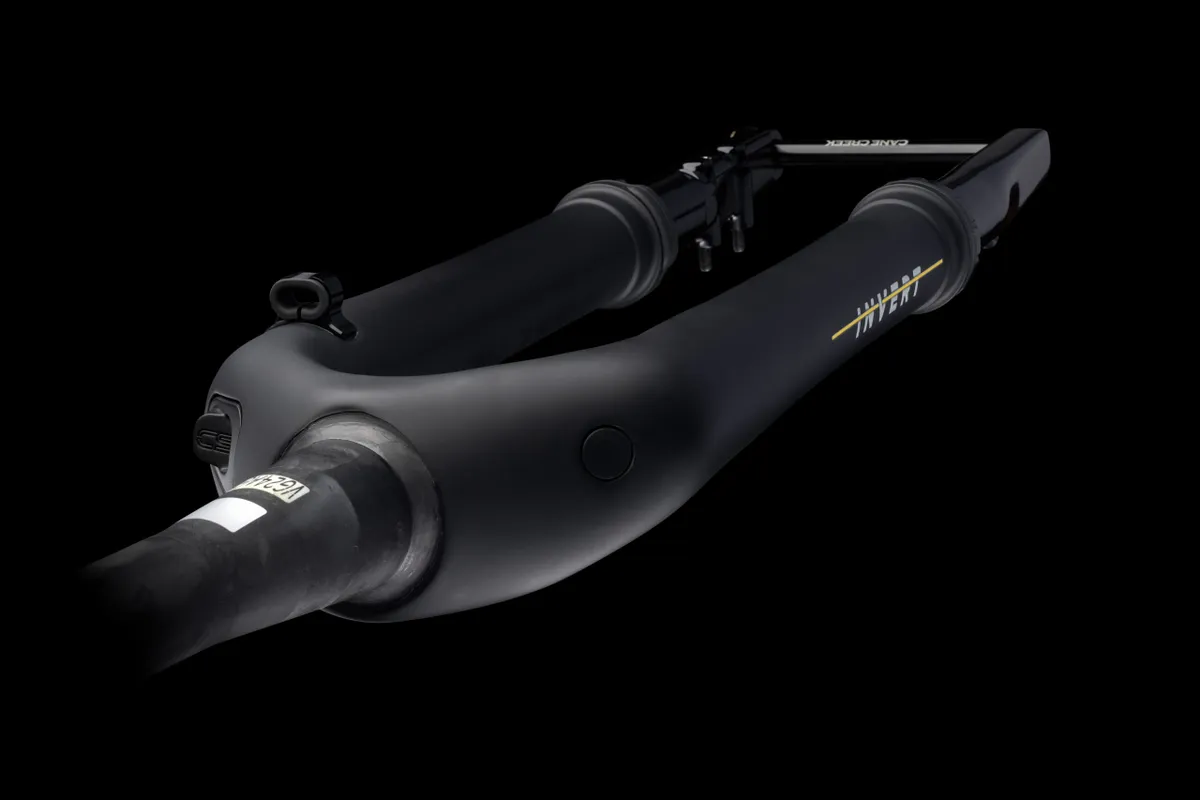Cane Creek has released details of its new Invert gravel suspension fork, which it confidently dubs the “world’s first gravel fork".
That’s quite the tall claim, especially considering the many other available gravel suspension forks.
But Cane Creek thinks current options are either too firm or offer too many adjustments that simply aren’t needed for gravel. As such, the brand reckons the Invert is the 'Goldilocks' solution.
Cane Creek will be offering the inverted suspension fork in two guises – the Invert SL and Invert CS.
The Invert SL is the more minimal and lightweight option, sporting 30mm of travel and weighing a claimed 990g. It will retail for £1,099.99 / $1,099.99.
The Invert CS boosts the suspension travel to 40mm and includes a ‘firm mode’ with a single-click, crown-mounted Climb Switch. The claimed weight increases to 1,113g and the fork will set you back £1,199.99 / $1,199.99.
European and Australian pricing is to be confirmed.
Unsurprisingly, since it's claiming it as the first, Cane Creek also says the Invert SL is the lightest gravel suspension fork on the market. The Lauf Grit SL trumps it at 960g (actual weight). However, it must be acknowledged that the Grit SL’s leaf-spring construction doesn’t represent an apples-for-apples comparison.
Cane Creek says the Invert fork will be available from the end of June.
Rethinking suspension

Cane Creek wants riders to rethink suspension on gravel bikes. The brand believes the current crop either underperform, with polarising looks and no adjustment, or that brands have simply taken a mountain bike fork and shrunk it.
Cane Creek says the Invert dampens vibrations with the “confidence and control to glide over rough roads”. Improved comfort is then a by-product that suspension creates, according to the brand.
As such, Cane Creek says the Invert will “make your gravel bike the best it can be rather than turn it into something it isn’t, such as a mountain bike”.
The brand says you can ride more demanding trails and it specifically wanted the fork to appeal to riders who typically wouldn’t ride with suspension.
Although Cane Creek has its eeSilk stems and seatposts, which both provide 20mm of tunable compliance, the brand says neither increase control on the bike, whereas the Invert does. The brand doesn’t recommend pairing the Invert fork with the eeSilk stem.
The Invert was developed from the ground up, rather than simply shrinking one of its Helm mountain bike fork offerings. It’s the first time Cane Creek has made a product from carbon fibre.

The forks are designed, prototyped and tested in the brand’s Fletcher, North Carolina facility. Production parts are made in Taiwan before being sent back and assembled in-house.
Cane Creek wanted the fork to visually integrate with the bike and considers an MTB-fork lookalike to disrupt the aesthetics.
The brand also didn’t want the Invert to have lots of adjustability, declaring it to have “everything you need and nothing you don’t”.
Once installed, Cane Creek says you simply need to pressurise the fork to 95 per cent of your rider weight. There’s no compression or rebound tuning and the climb switch on the Invert CS is binary – it’s either on or off.
Why the inverted design?

Despite Cane Creek being critical of the appearance of other gravel suspension forks, the Invert stands out with its inverted design, which places the stanchions at the fork’s base.
Inverted forks are commonly found on motorbikes (Cane Creek says many of its staff are also passionate motorcycle enthusiasts), with the increased chassis rigidity typically improving handling, particularly when cornering.
They are also more sensitive than conventional forks because the suspension oil typically gathers at the bottom of the fork leg, meaning the stanchions, seals and bushes are continuously being lubricated, resulting in smoother performance. The ratio of sprung to unsprung mass also contributes to this sensitivity because a traditional fork’s lowers are heavier than the uppers.

Cane Creek says the inverted design allows for the lightest possible chassis, in addition to a lower unsprung weight. The brand says gravity keeps the seals and bushing lubricated for smooth operation and the bushing overlap is increased throughout the travel.
In addition, the lack of an arch allows for more tyre clearance.
Inverted forks also tend to struggle with a lack of torsional stiffness from a cycling perspective. Cane Creek says the shorter travel overcomes this because there isn’t a lot of opportunity for the front end to flex.
The brand says it has extensively tested the fork.
Cane Creek Invert tech specs

The fork’s chassis comprises a carbon fibre crown and steerer bonded to aluminium upper tubes.
The steerer dimensions are 1 ⅛ to 1.5in, in keeping with many gravel bikes. The fork has an integrated crown race and Cane Creek includes its Ancora expander plug and a ZN40 lower headset bearing.
Cane Creek acknowledges there are a wider variety of headset standards on gravel bikes than on mountain bikes, but isn’t planning on developing any other steerer options for now.
Both fork models have a 45mm offset. Cane Creek says it opted for this figure because it’s in keeping with many other options and should be “fairly close to the original offset of the original fork without throwing the bike’s geometry off”.
Cane Creek says if your bike used a rigid fork originally, you can expect the front end to be raised by 20mm and the head tube slackened by a degree.
The maximum system weight is 250lb / 113.4kg.

The brake routing is external, with a guide to stop the hose from flapping around.
The 30mm-travel Invert SL is claimed to weigh 990g. It has a raw carbon-to-black fade upper with a 425mm axle-to-crown measurement.
The 40mm-travel Invert CS is heavier at a claimed 1,113g, sporting an all-matt black upper. The axle-to-crown measurement is boosted to 435mm.
You cannot retrospectively change the travel because both forks use different length air springs.
All forks are designed around a 12x100mm thru-axle and flat-mount calipers. The minimum disc brake rotor that can be used is 160mm and a 180mm rotor can be used with an adaptor (the part number is BBG0800).
The forks have a tyre clearance of 700c x 50mm (measured width with 6mm of clearance either side).
The Invert forks come with a two-year warranty.
What about servicing?

Cane Creek says many riders are intimidated by suspension servicing, so it wanted to make servicing as easy as possible.
The brand recommends a 50-hour 'splash oil service' (equivalent to a lower-leg service) and a rebuild after 100 hours.
A neat touch is that the seal heads use an open-ended 12-notch bottom bracket tool fitting (found on Race Face Cinch, SRAM DUB BSA and Cane Creek’s own bottom brackets).
Once unscrewed, the service procedure involves draining the oil and wiping everything clean. Each leg requires 5ml of 15wt oil and you then simply retighten the seal heads.
